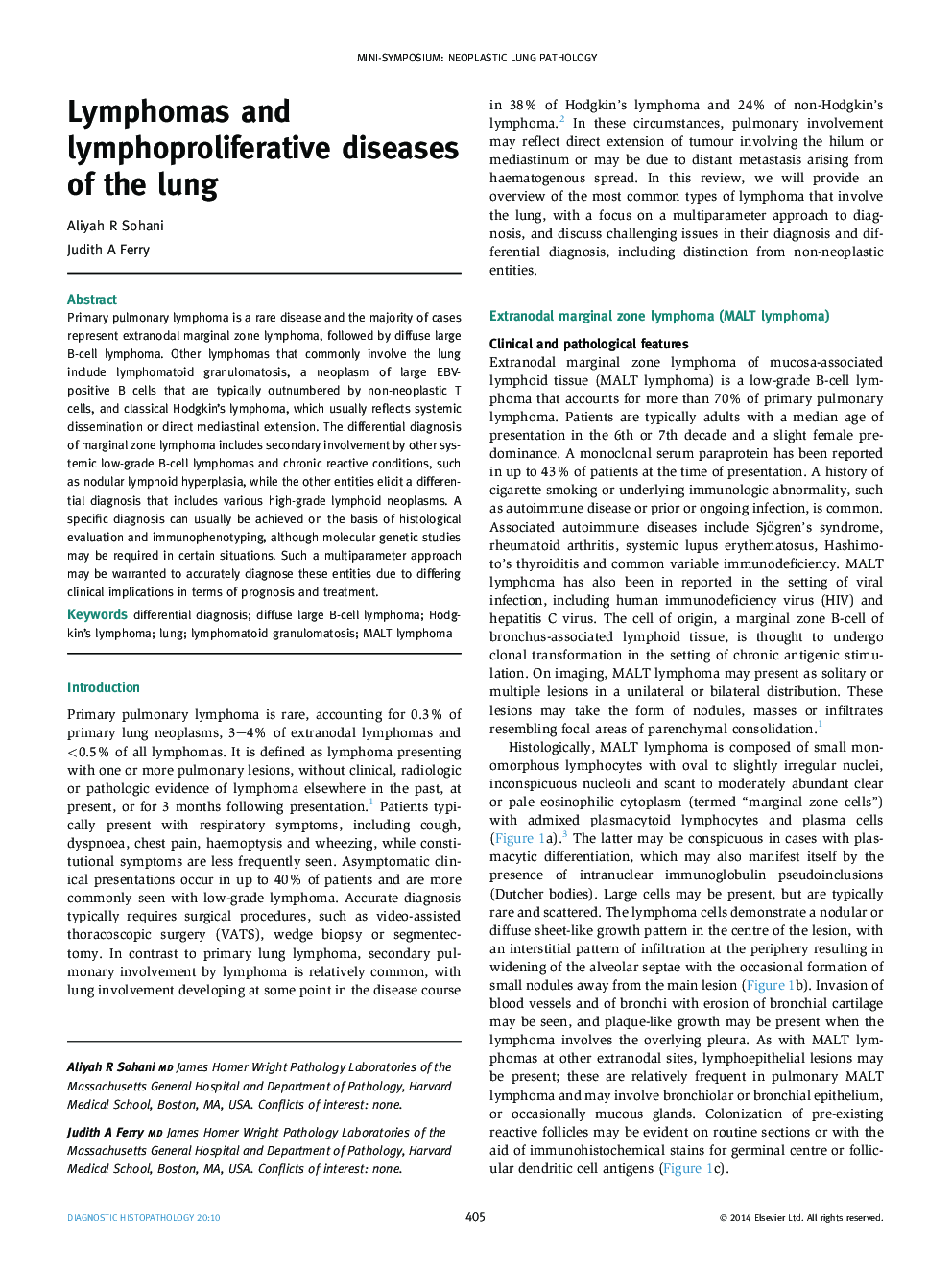| Article ID | Journal | Published Year | Pages | File Type |
|---|---|---|---|---|
| 4131091 | Diagnostic Histopathology | 2014 | 10 Pages |
Primary pulmonary lymphoma is a rare disease and the majority of cases represent extranodal marginal zone lymphoma, followed by diffuse large B-cell lymphoma. Other lymphomas that commonly involve the lung include lymphomatoid granulomatosis, a neoplasm of large EBV-positive B cells that are typically outnumbered by non-neoplastic T cells, and classical Hodgkin's lymphoma, which usually reflects systemic dissemination or direct mediastinal extension. The differential diagnosis of marginal zone lymphoma includes secondary involvement by other systemic low-grade B-cell lymphomas and chronic reactive conditions, such as nodular lymphoid hyperplasia, while the other entities elicit a differential diagnosis that includes various high-grade lymphoid neoplasms. A specific diagnosis can usually be achieved on the basis of histological evaluation and immunophenotyping, although molecular genetic studies may be required in certain situations. Such a multiparameter approach may be warranted to accurately diagnose these entities due to differing clinical implications in terms of prognosis and treatment.
